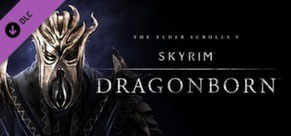It’s taken a while for Skyrim to finally get an expansion that’s, well, like Skyrim. Dawnguard was fun, sure, and it had some spectacular vistas, but it didn’t even begin to approach the amount of open-world exploring that made Skyrim one of the best games of 2011. Now, finally, as ambitious and imperfect and sometimes annoying and amazing as Skyrim originally was, Dragonborn comes to PC, bringing players to Solstheim and a new plane of Oblivion. It is, in the best sense of the word, more Skyrim.
With a new landmass roughly a fifth the size of Skyrim’s mainland, the island of Solstheim shares the snow of the main game, but trades the rest for the wonderfully bizarre trappings of Morrowind. Buildings carved from discarded shells, massive silt striders, and the remains of Imperial colonization are only some of the things you’ll find on the island as you investigate the plans of the original Dragonborn to come back to life.
It’s been over a decade since the Elder Scrolls series took us to Morrowind. While some might have signed on for the dragon riding or the new quest line involving your new rival, the first Dragonborn, I’ve always been an Elder Scrolls lore junkie, and Morrowind was always home to the choicest, weirdest cuts of lore. When Dragonborn finally came to PC, I jumped at the chance to return to Solstheim.

Solstheim is both awash in nostalgia and refreshingly unfamiliar. Changed by the events between Morrowind’s Bloodmoon expansion, the island’s been abandoned by the East Empire Company, and instead claimed by the its native inhabitants and the Dunmer noble houses. Books explain the new trinity of the gods that have replaced the Tribunal that Morrowind left dead, and some of the game’s best-written NPCs detail what’s happened to the province since the Nerevarine last came.
Unfortunately, as good as the lore is, and as interesting as exploring the world is, the game’s mechanics don’t quite match up to its ambitions. The dragon-riding is disappointing, only allowing you to launch occasional attacks at the ground and as a new way to fast travel. For all the hype about fighting the original Dragonborn, he turns out, in the end, to be another Skyrim fight. Still, by this point, after the painfully awkward vampire lord form in Dawnguard, and Skyrim’s general inability to make a fight against a human-scale opponent more dramatic than timed blocks and bonking enemies with your axe shouldn’t surprise anyone. They’re certainly parts of the game, but not parts that I think anyone comes for.
The parts that people do come for – getting lost in a vast overworld, exploring dank dungeons and strange environments – are all present and accounted for. It’s the first expansion to Skyrim that acts on why the base game was so good and, if you still have even a spark of interest remaining in Skyrim, it’s worth picking up Dragonborn to rekindle it.



















